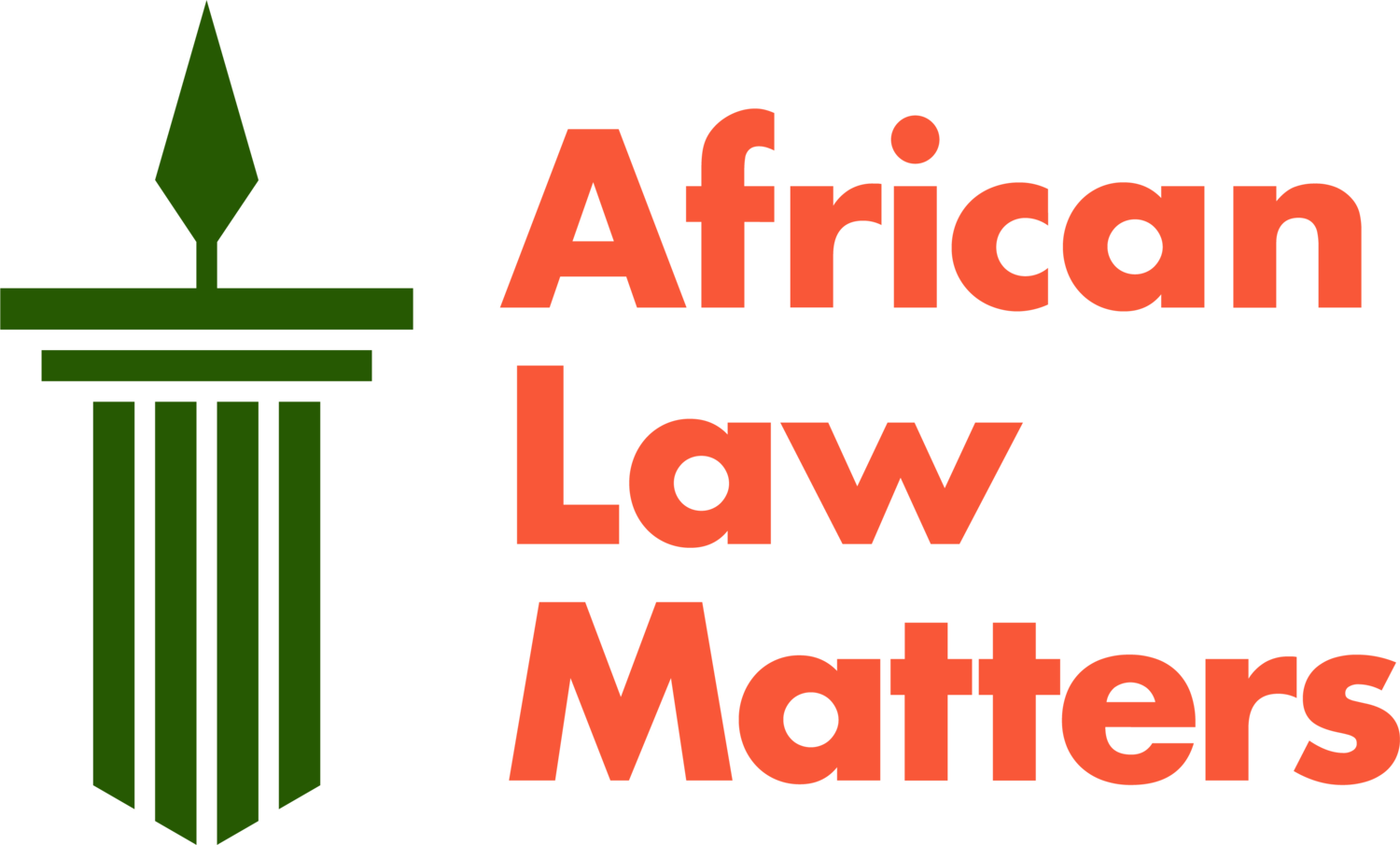When False Accusations of Racism Become Workplace Weapons
Picture Credit: uneca.org
Editors note. This blog piece is an excerpt from a case note titled “Unfounded Accusations of Racism as Workplace Discrimination” published in the July 2025 issue of the Industrial Law Journal."
In post-apartheid South Africa, few workplace dynamics are as fraught as allegations of racism. Yet a recent Labour Court judgment reveals a troubling blind spot in our legal system’s approach to discrimination—one that could undermine the very protections meant to foster racial harmony in the workplace.
In my recently published case note in the Industrial Law Journal, I examine Solidarity obo K v Western Cape Education Department, a case that presents a scenario many South African managers will recognise: a deteriorating workplace relationship where accusations of racism become weapons in an escalating conflict. The case raises fundamental questions about how our courts interpret and apply the Employment Equity Act 55 of 1998 (EEA) when dealing with unfounded allegations of racism.
The Case and Its Flaws
The dispute involved a white farm manager employed by the Western Cape Education Department who faced repeated misconduct from a coloured subordinate, including insubordination, physical assault and, most significantly, unfounded accusations of racism during workplace disputes. When the manager eventually resigned and pursued both unfair dismissal and discrimination claims, the Labour Court’s treatment of the discrimination claim revealed several concerning legal flaws.
The court’s most problematic finding was its failure to recognise that unfounded accusations of racism constitute discrimination. By treating the false allegation as conduct on an “arbitrary ground” rather than a listed ground under section 6(1) of the EEA, the court ignored established legal precedent. In Legal Aid SA v Mayisela, the Labour Appeal Court was explicit that unfounded accusations of racism are inherently “demeaning, insulting and an attack on dignity”. Similarly, in SA Chemical Workers Union v NCP Chlorchem, the Labour Court held that being falsely accused of racism will “invariably be experienced as insulting and abusive”.
This classification error has significant consequences. Under section 11 of the EEA, complaints based on listed grounds place the burden of proof on employers to justify their conduct, while arbitrary grounds require complainants to prove the conduct was irrational, discriminatory and unfair—a much higher threshold.
Understanding the Legal Framework
The Employment Equity Act establishes two key concepts relevant to this case. First, section 6(1) prohibits discrimination on both “listed grounds” (including race) and “arbitrary grounds” that meet the Harksen v Lane test: conduct “based on attributes and characteristics which have the potential to impair fundamental human dignity”. Second, section 60 creates employer liability when employees contravene the Act, provided the conduct is reported and the employer fails to take reasonable steps to address it.
The Labour Court’s reasoning on both points was problematic. Unfounded accusations of racism cannot exist independently of race as a concept–—they derive their sting precisely from the target’s racial identity. Such allegations weaponise race by attempting to stigmatise individuals based on their racial characteristics, clearly falling within the Act’s protection of human dignity.
Technical Barriers and Missed Opportunities
The court also created artificial technical barriers by distinguishing between complaints of “misconduct” and “discrimination” for purposes of section 60 liability. This distinction is both impractical and dangerous. When the manager complained about being falsely accused of racism, this should have put the department on notice of potentially discriminatory conduct, regardless of whether he used the specific label “discrimination”.
“South Africa’s transformation project depends partly on workplaces becoming spaces of genuine racial harmony rather than battlegrounds where race becomes a weapon.”
Most employees lack the legal sophistication to categorise their experiences within precise legal frameworks. The Code of Good Practice on the Prevention and Elimination of Harassment in the Workplace explicitly recognises that racial harassment can manifest through “racist verbal and non-verbal conduct, remarks, abusive language or innuendos”—which encompasses unfounded accusations of racism.
The judgment also troublingly characterised the false racism allegation as a “single incident”, seemingly minimising its severity. Item 4.5.1 of the Code states that harassment “may occur as a result of a pattern of persistent conduct or a single instance or event. In the case of a single instance, harassment will be present if the conduct is of a serious nature.”
Key Recommendations from the Research
Based on my analysis, I propose five critical recommendations for legal reform and judicial interpretation:
(i) Recognise unfounded accusations of racism as discrimination on listed grounds. Courts should acknowledge that such accusations inherently relate to race and constitute harassment based on racial characteristics, triggering the more protective burden of proof provisions.
(ii) Eliminate artificial distinctions between “misconduct” and “discrimination” complaints. The substance of complaints, rather than their labels, should determine how they are treated under anti-discrimination law. Section 60 liability should be triggered whenever conduct reported to employers is inherently discriminatory in nature.
(iii) Require proactive rather than merely reactive employer measures. Courts should not accept that disciplinary action alone constitutes “reasonable steps” under section 60. Employers should be required to implement comprehensive anti-discrimination policies, training programmes and preventative measures.
(iv) Apply the severity test for single incidents properly. Courts should recognise that isolated incidents of serious discriminatory conduct, particularly unfounded racism allegations, can constitute harassment without requiring a pattern of behaviour.
(v) Adopt purposive interpretation of anti-discrimination provisions: Courts should focus on the protective purpose of equality legislation rather than creating technical barriers that undermine access to justice.
The Broader Stakes
These legal technicalities have real-world consequences. In a country still grappling with racial transformation, workplaces need clear, robust mechanisms to address both genuine racism and its false accusation. The court’s decision potentially creates a two-tier system where only legally astute complainants receive full protection.
More concerning is the precedent this sets for employer liability. The court accepted that merely responding to discrimination complaints through disciplinary procedures constitutes adequate preventative action. This reactive approach ignores the proactive duties employers should have under section 60(4) of the EEA.
The implications extend beyond this individual case. In workplaces across South Africa, the weaponisation of racism allegations—whether founded or unfounded—represents a significant threat to productive labour relations. False accusations undermine legitimate anti-discrimination efforts by creating cynicism and defensive reactions that can impede genuine transformation.
A Path Forward
Legal systems must be sophisticated enough to distinguish between genuine discrimination requiring robust intervention and false allegations that themselves constitute discriminatory conduct. This requires courts to adopt purposive rather than technical interpretations of anti-discrimination legislation.
The law should recognise that unfounded accusations of racism harm both their immediate targets and the broader project of racial transformation. They represent a form of discrimination that attacks human dignity through racial stereotyping and innuendo. When such accusations are made without reasonable grounds, they should trigger the same legal protections as other forms of workplace harassment.
South Africa’s transformation project depends partly on workplaces becoming spaces of genuine racial harmony rather than battlegrounds where race becomes a weapon. This requires legal frameworks that can effectively address both racism and its false accusation with equal vigour.
The Labour Court’s judgment represents a missed opportunity to clarify these principles. Future courts should adopt the more purposive approach I advocate, recognising the inherent dignity-based harm caused by false accusations of racism. Only through such principled legal development can we hope to build workplaces where racial allegations are taken seriously when genuine, but where the mere invocation of race cannot be used to settle workplace scores.


